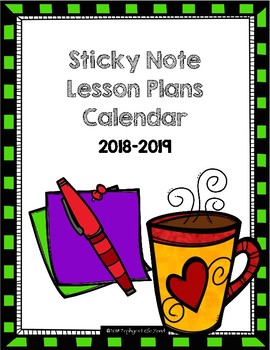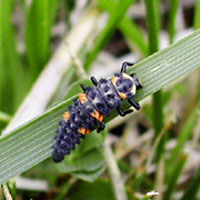Spring is here! And with spring comes my life sciences chapters. One of my favorite things to do in my classroom is to set up my science center with tons of insects for the children to observe. And, they love it too!
In our curriculum, we have to teach both complete & incomplete metamorphosis. For most, complete metamorphosis is very familiar: egg, larva, pupa, & adult. Many, however, have never heard of incomplete metamorphosis: egg, nymph, & adult. To help my students grasp this concept, I prefer to bring in animals they can observe. If your school will let you, it's what I've found to be the BEST way to teach these concepts. Below are some examples of animals you can hopefully find in your own yard (or the kids' yards) to start your own science center along with little tidbits of information I've learned along the way.
One of our science centers...
From Left to Right: Tadpole Aqaruium (10 gal), Butterfly Habitat (Exo Terra Small), Grasshopper Habitat (10 gal), Lady Bug Habitat (Exo Terra Nano), and the tiny red one is our Meal Worm Habitat
Complete Metamorphosis
Monarch Butterflies - probably the most common example of a butterfly, so posters are easy to find. I have seen the butterfly net-contraptions that are frequently sold and have been disgusted with them....exactly where does the poop go??? Yeah. Gross. So, I came up with the idea of using an aquarium with about an inch of fresh dirt straight from our backyard playground on the bottom. That dirt contains all the bacteria you need to break down the larva's waste so your habitat isn't a horrendous mess. In fact, I put soil in all my habitats for that reason. Now, once you're completely sold on having butterflies in your classroom, it's time to order a real terrarium for them! :) I recommend writing a Donors Choose project for a real terrarium. I personally prefer the Exo Terra line, but any will do.
-
Exo Terra Small - for a decent sized habitat
-
Exo Terra Nano - for a smaller habitat that is still great for insects
Frogs & Tadpoles - Tadpoles are easy to care for in a standard aquarium. Fill the bottom with 1.5-2 inches of aquarium gravel, add 3-4 inches of water, and then add some rocks that stick out above the water. Remember, as their lungs develop, you'll need a place for them to rest. You'll also need a way to circulate the water.
Small/Inexpensive Set Up: Get a
submersible pump and arrange the rocks nicely around it to make a little fountain. Make sure there's a current of moving water in the tank.
A Bit Nicer: Get a
Decorative Reptile Filter (basically, a pump inside of a nice rock waterfall that's designed to fit in the corner of your tank).
The cover of the aquarium needs to fit securely. My very first tadpole, Lucky, grew his legs and hung out on the side of the tank for a few days. One day we came in and Lucky was gone. :( We found him a few weeks later...poor Lucky wasn't so lucky. He was found, dried up and dead, on the other side of the classroom. Lesson learned. I've now got a screen lid from the pet store (cost me about $10). I can't find an example on Amazon, though. Check your local pet store.
Needed in My School....Maybe Yours...? -
Mosquito Dunks - I get mosquitoes in my FL classroom and a frog tank with semi-moving water just draws them. Thankfully, if I use a part of one of these in the water (I drop it in the decorative filter so I don't have to look at it floating in the water) the mosquitoes don't survive and the tadpoles do great.
Oh! And you need to feed those tadpoles. :)
Tadpole Food
Once you have frogs...release them or move them to a more water-based toad tank. Though, I've always just released them back to my own pond.
Toads - You'd think these would be just like the frogs, and they are if you're raising toad tadpoles. But, once you've got adults, they need dirt to dig around/hide in and not much else. I put a nice little stone "swimming hole" in there for them and some fresh branches/leaves for them to hide in. Then, just feed them crickets and you're good to go.
Lady Bugs - Most have never seen lady bug larva - and if you have, you may not have known what you were looking at! I call these my Carnivorous Beetles until one completes its life cycle and the kids realize what we have. Some are terrified of getting too close to the larva - carnivorous, yeah, I get it! They eat aphids (those yellow bugs on milkweed). And lady bugs are a type of beetle.
What you need....a container and a supply of aphids. If you have milkweed, you may already have those terrible, yellow bugs. I would snip off a branch full of yellow bugs first thing in the morning and put it in the lady bug tank. Halfway through the day, once the bugs have been cleaned off, move the branch to the butterfly tank and let them finish off the leaves. Win-win!
As far as the container goes, a large plastic jar (like a pretzel jar from Costco) can do the trick. I would cover it with a piece of tulle instead of the actual lid. Secure it with a rubber band. These things like to try to escape. When you're ready to upgrade, go with the
Exo Terra Nano. I got this for my room this year and it looks awesome!
 Ants
Ants - Buy an
ant farm! This year is the first year I've had one in my classroom and it's been a lot of fun. I got the ant farm off Amazon and the ants too. The
ants on Amazon are larger than your average garden ant so they can't escape. (Really, don't even try to attempt to get your own ants. It's not worth the liability risk.)
Care: A couple drops of water and a piece of carrot every few days and you're all set. Though, I'd recommend that the teacher be in charge of feeding this critter...just in case! (In fact, in my class I duct-taped the lid shut -even though it snaps shut tight...and all but threatened my kids that if I saw anyone opening the top. So far, no one has dared touch the top, but they're all very excited to crowd around the table and watch them scurry about.)
Meal Worms - I'll be honest...this is a first year for meal worms. One of my students brought in 4 of the things and they're happily munching on the oatmeal I keep dropping into their habitat for them. We'll see what happens...
Incomplete Metamorphosis
Grasshoppers - Did you know that those black grasshoppers with red/orange/yellow stripes down their backs are actually the nymph version of the "beautiful" and colorful lubber grasshoppers?? I didn't until last year! We caught a bunch of the black ones (they'll eat anything...just pop them into a secure aquarium with an inch of soil on the bottom and a bunch of leaves on branches and they're happy) and watched them shed their skins. Heads up...some sheddings look like dead grasshoppers... We left these insects in the tank for the last two months of school and got to the point that one of them was starting to sprout little wings!
And, I know that a lot of people hate these things because they ruin plants. Just do your kids a favor and bring them into the classroom anyways. When it comes to incomplete metamorphosis, these are really easy to care for and readily available. Of course...if you don't like grasshoppers....you can always observe roaches...!!!!
Crickets - Crickets are brought into my class for one main purpose....the toads. But, while they're there, we might as well observe them too. I put them in a small tank with an inch of soil on the bottom (in case they decide to lay eggs) and a
place for their food/water. You've got two options for cricket food....the
orange food/water combo or the
food and
water gels separate. I've used both and prefer the food and water separate. I can't seem to use it up in one year and the separate ones seem to last until the next year if stored properly.
Roaches - EWW!! This is where I draw the line. I will mention this in class, but I refuse to bring them into my room!
Extras...
Models: These can get pricey (they run about $10 each set), so I'd recommend writing these into a Donors Choose project or pick them up slowly over the years. But, they're great for kids that need to see all the stages at the same time. Just yesterday I was talking to my kids about complete & incomplete metamorphosis and asking about the ant. Someone said an ant went through incomplete metamorphosis and I heard another student very quickly interject and refer back to the models. YES! :)
Books: I feel like we should always have books tied into our curriculum available for the students, so I first check our own library to see what's available. This year, I also wrote a Donors Choose project for some National Geographic books about Ants, Butterflies, Frogs, and a variety of different animals we could use for our life science chapters. I really appreciate the National Geographics series because they are written on a variety of levels and some are even available in Spanish (a big help with my new students that speaks no English!).
FL Benchmark: SC.4.L.16.4










